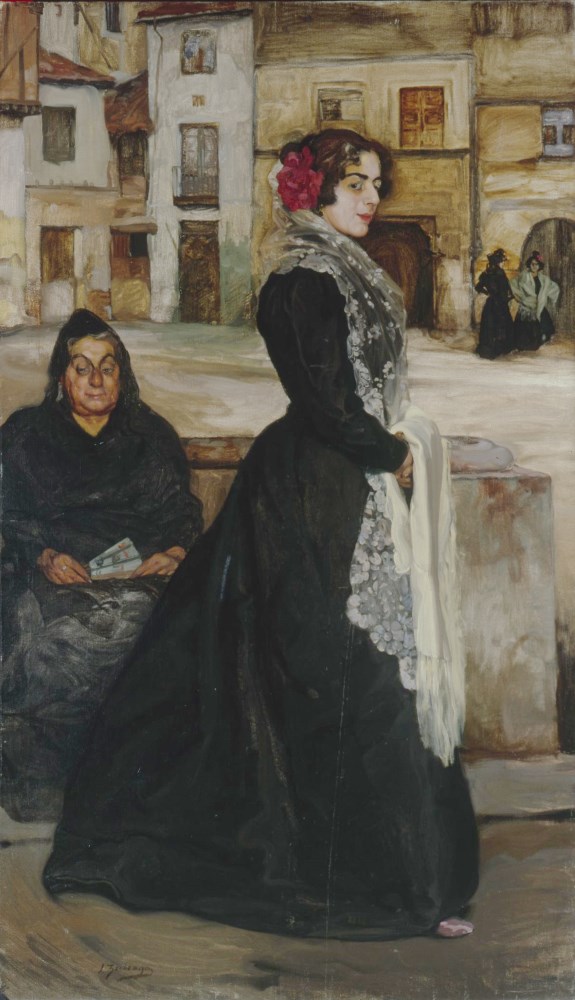Description:
Ignacio Zuloaga (1870-1945) studied painting in Rome and at the École des Beaux-Arts in Paris. While living in France, he was in contact with Gauguin, Rodin and Degas. From 1899 he returned permanently to Spain. He created under the influence of Manet and Goya. In his work he dealt with landscape painting, portraiture and genre scenes, depicting scenes from the lives of Spanish villagers.*
Description of the painting:
In the foreground we see a full-length silhouette of a young woman depicted in profile. She is dressed in a black, floor-length dress with long sleeves. Only the tip of a pink slipper peeks out from under her robe, giving the impression of movement towards the right edge of the painting field. The woman carries a white scarf with long fringes on her intertwined hands. She has a traditional mantilla – an openwork shawl – thrown on her shoulders, pinned to her hair in a bun. We see the pale face of the woman in three-quarter view. It is turned towards the viewer and her gaze is focused on him. Her lips are highlighted with red lipstick and her face is surrounded by single curls. A large red flower pinned to her hair serves as an ornament and draws attention. On the left side of the painting field, behind the foreground figure, an older woman is depicted frontally. Her outfit and mantilla are also kept in black. Her hands are placed on her knees, holding a fan. Her face is turned towards the viewer, establishing eye contact. She is strongly tanned and the age is emphasized by numerous wrinkles on her face. The figures are presented against the backdrop of a Spanish village alley. On the second plan, a square surrounded by buildings is visible. On the right edge of the painting, two women dressed similarly to the foreground figure can be seen.
The composition seems to be a frame from a Spanish street. The woman in the foreground looks at the viewer with a flirtatious look, while the older woman seems to be observing the situation. The painting fits into the costumbrista current present in Spain at that time, which consisted of faithfully depicting the life and customs of the epoch and representing local culture, everyday life and folklore.


